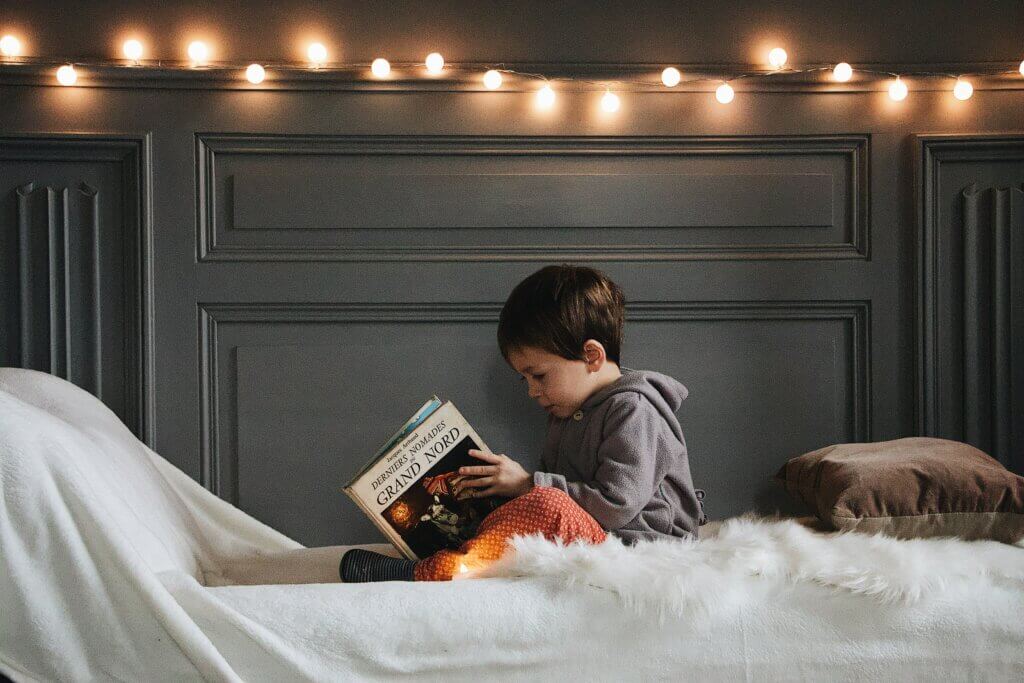What happens at your house when it’s time to go to bed? When it comes to bedtime for many parents of little children, even the greatest days start to go awry. And if your child is reluctant to go to bed, it can have a big impact on the entire family. Every parent would want to know the ways to avoid bedtime tantrums.
Preschool-aged children (those aged 3 to 5) require approximately 11 to 13 hours of sleep each day (including naps). If your child goes to bed too late, they may not be getting enough sleep, which can lead to countless problems, including irritability and tiredness during the day. And if your child isn’t getting enough sleep, chances are you aren’t either, which isn’t good for anyone.
While some toddlers are tolerant when it comes to bedtime, many others are not. Of course, everyone has a bad night now and then. In this article; we have covered some useful tips to avoid bedtime tantrums:
Tips to Avoid Bedtime Tantrums:
You’ll all be sleeping soundly (in your separate beds) in no time if you follow a few parent-approved tips and tricks. For a good night’s sleep for the whole family, check out these bedtime tricks.
#1 Allow children to make their own decisions.
Young children like to be in charge, but they also require boundaries. So, during the night, appeal to your child’s urge to be in charge by giving him or her some options.
Keep in mind that if you give your child a choice, you should choose options that you will be happy with, regardless of what your child chooses. If you’re asked how many books you read before night, don’t say four, five, or six if you’re not willing to read that many. You don’t want to break your commitment because it will lead everyone to be frustrated. Here are a few options to consider. Figure out which ones work best for you and your family.

- Ask as to which pair of pajamas they like.
- Allow your children to choose the book they want to read before going to bed.
- Talk about the best order to perform their bedtime routine.
- Allow them to select when they want to go to bed. Make sure to include a choice that you are happy with! You can, however, be silly with this one as well. Make the options 10 a.m., 6 p.m., and 7:30 p.m. if you’re talking about it earlier in the day.
- Bring around ideas for which plush animal to sleep with, such as a duck or an elephant.
- Many toddlers have enough stuffed animals to form their zoo, so choices are crucial here also.
Make sure to give a few options and don’t leave the question open-ended, or you’ll get responses like “I want to read 100 books!” or “I want to go to bed at midnight!”
#2 Use blackout curtains.
Whether the room is still too light at bedtime or a touch too light very early in the morning, blackout curtains perform an excellent job of completely darkening it. However, be aware that blackout curtains can make the room rather dark, so have a night light handy if you think the darkness will be too much for your child.
#3 Introduce Soothing Scents
When it comes to helping individuals relax, lavender and chamomile are fantastic. While many people recommend utilizing essential oils, you must be cautious when applying them to young children’s fragile skin.
Instead, utilize devices like sprays and diffusers to emit scents into your child’s room (being very careful to follow all directions). These scents can also be used in the Go Away Spray or diluted in soap or body wash.
#4 Invest in a weighted blanket.
Weighted blankets have long been praised by parents of special-needs children as excellent bedtime therapy tools. They provide comfort to youngsters with sensory issues, autism spectrum disorder, or other specific needs. Other children, though, may benefit as well.
#5 Make Your Own Go Away Spray.
A little comfort can go a long way for kids who have nightmares, dread of the dark, or fear of the unknowns in the dark. Whether it’s a monster under the bed or an unknown in their closet, “Go Away Sprays” or “monster repellants” encourage kids to spray away from their fears.
You can either buy them or make your own. Simply fill a spray bottle or mister with water and add your child’s favorite aroma, whether it’s an essential oil or a perfume or cologne. Allow the child to decorate the bottle in any way they choose.
However, instead of utilizing a “Go Away Spray,” think about using something more positive, such as Brave Potion or Courage Spray. The use of Go Away Spray may reaffirm to your child that there is something to be afraid of in the room, whilst the alternatives encourage them to be brave.
#6 Play Some Relaxing Music.
Lullabies have long been a favorite of new parents and for good reason. So, as your child grows older, why not continue the practice? While there isn’t a lot of scientific data to back up the efficacy of lullabies, some study suggests that playing soothing music or sounds can help kids sleep better.

Make sure the music is loud enough for your child to hear, but not so loud that it prevents your child from going asleep. Bonus: If you use the same soundtrack every night, your kid will gradually associate the music with bedtime and will be able to rest much more quickly.
#7 Give your kid a bath or a shower.
Many people enjoy bathing or showering first thing in the morning because it helps them wake up. However, it can also assist you in unwinding before going to bed. Giving your child a bath or shower at night serves several purposes: it cleans them after a long day of running, jumping, climbing, playing, and whatever else has made them messy and/or dirty. A bath or shower can put a stop to the day and allow for some quiet bath time in the tub.
#8 Offer a Little Snuggle.
Bedtime can be difficult for some kids since they don’t want to be separated from their parents or caregivers. So take some time to unwind with your partner. This should not be confused with reading a bedtime tale (which is also a wonderful method to help a child relax!).
Turn off all the lights, put away the screens, and snuggle under the blankets. You can either talk about your day or sit in (comfortable) quiet. One thing to keep in mind is that- you should not slip into the habit of allowing your child to fall asleep, while you are still present. This might lead to other problems.
All in all:
Managing kids’ bedtime tantrums could be quite challenging. But following the different bedtime tips for kids help parents a lot. The above-mentioned are some tips that you can follow to reduce bedtime tantrums. Try to make bedtime more pleasant for your child by following the tips mentioned in the article.










